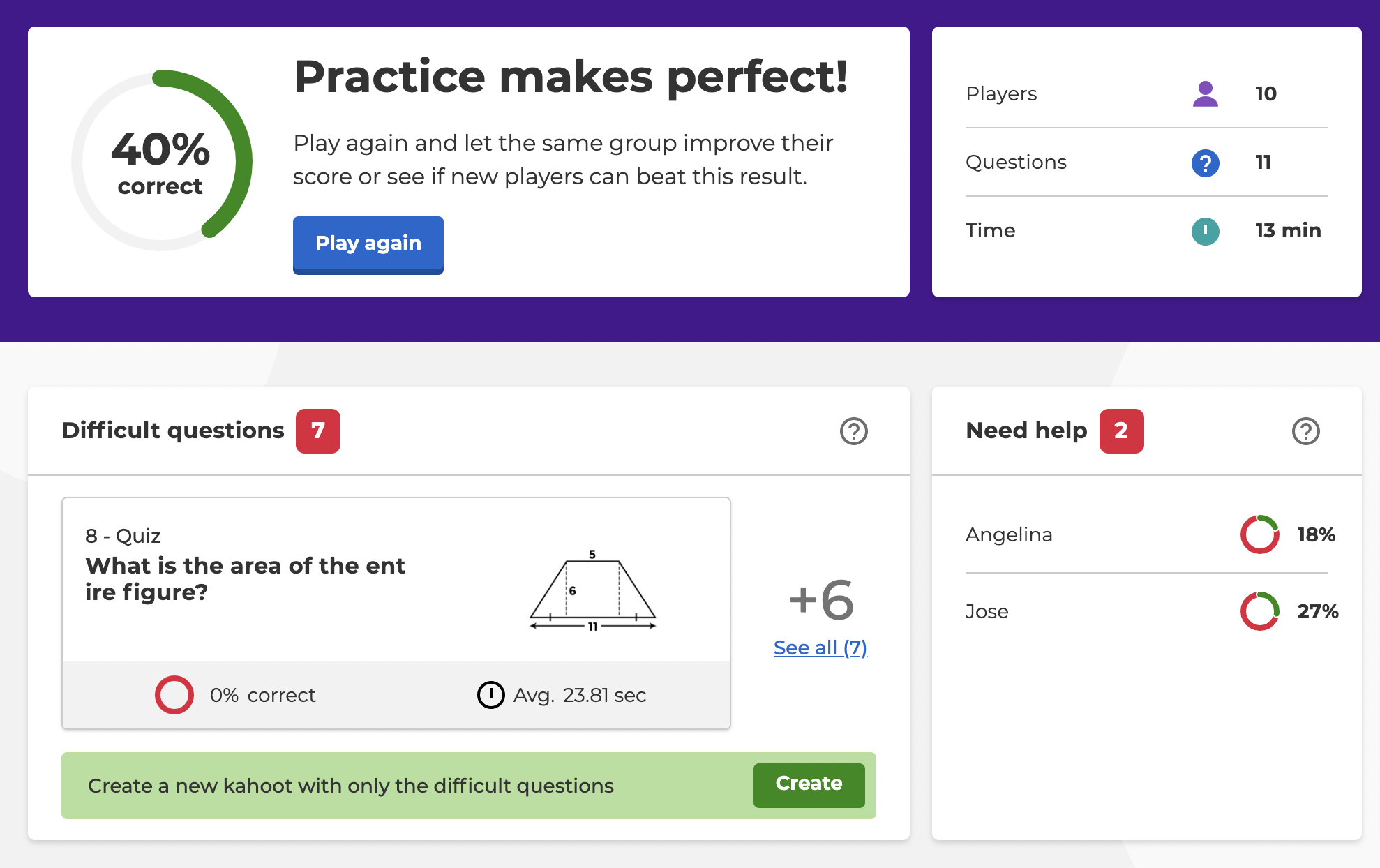Overview
Collecting data frequently and efficiently is crucial for teachers to gauge understanding and adapt their lessons in the moment. Introducing fun and interactive ways to collect this data helps teachers keep students engaged, which is increasingly difficult in a digital world. Some students may also be more likely to accurately demonstrate their understanding if they are “competing” with other students or are playing to “win”. Teachers can utilize digital tools such as Kahoot, Quizziz, Classcraft, and Gimkit, or offline tools such as Plickers and physical leaderboards to check for understanding quickly during or after a lesson.
In a hybrid or remote learning environment, gamification can help bridge the digital divide by allowing students to concurrently engage in material (e.g., do a live quiz together or play a space race) while participating simultaneously from their individual devices and locations.
If you’re new to gamification, here are some starting points for your classroom:
Be clear around expectations
Practice procedures
Establish class norms around competition and collaboration
If you’re experienced with gamification and want to take it one step further, challenge your students to try some of these ideas:
Student-created assessments: Teachers can support students in reaching the top level of Bloom’s Taxonomy by allowing them to create their own assessments in these platforms and have other students take them.
Choose-your-own-adventure: Teachers can set up personalized learning paths and have students “level up” by showing their mastery of a skill, and then moving onto the next unit. This can be done asynchronously (e.g., Classcraft) or synchronously (e.g., Battle Questions).
Strategy Resources
Socrative Quiz
This screenshot shows how the results are displayed after a multiple choice quiz on Socrative... Learn More

